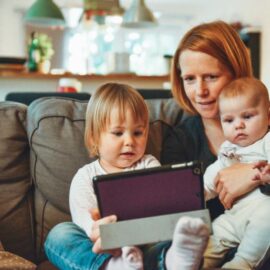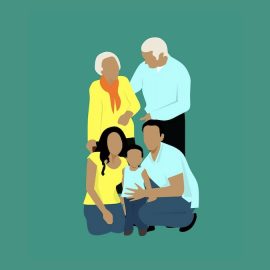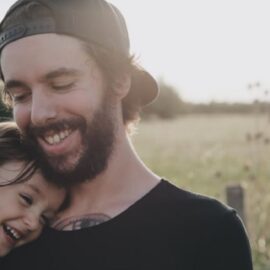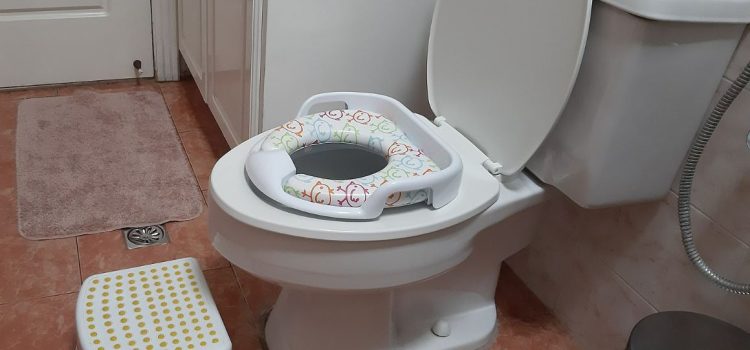
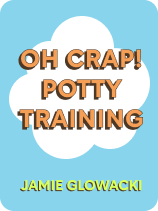
This article is an excerpt from the Shortform book guide to "Oh Crap! Potty Training" by Jamie Glowacki. Shortform has the world's best summaries and analyses of books you should be reading.
Like this article? Sign up for a free trial here .
At what age should you start toilet training your child? How do you know when your toddler is ready?
In her book Oh Crap! Potty Training, parenting coach Jamie Glowacki explains how to start toilet training. She says that you should start potty training between 20 and 30 months of age and not to wait until the child signals that they are ready.
Here’s how to start toilet training your toddler.
When to Begin
Want to know how to start toilet training your child? Jamie Glowacki recommends beginning potty training when your child is between 20 and 30 months old. She claims that at this age, your child will be eager to please, curious, and willing to accept new responsibilities. Any younger and they might not fully grasp what you expect of them. Any older and they’ll be more willing and able to resist you and engage in power struggles.
(Shortform note: You might think that children are too young to be potty trained at this age. However, research shows that many Vietnamese mothers get their children out of diapers at around nine months of age by training them from birth. This suggests that consistency matters more than age for potty training. Therefore, an approach like Glowacki’s should work even for children who are quite young.)
In addition, do not wait for your child to signal they are ready. Glowacki emphasizes that your child often won’t send these signals—they don’t know they want potty training, and will instead try and stay in their comfort zone (diapers). A toddler won’t make a large decision like when to start potty training on their own, so you have to. (Shortform note: While Glowacki claims there’s no specific moment within the 20-30 month range when you should begin potty training, many child psychologists argue that your child will have a specific moment when they are ready and show it. They suggest you look for signals such as expressing dislike of dirty diapers, mimicking your bathroom behavior, and communicating when they pee or poop.)
Preparing
Glowacki provides several steps you should follow to prepare yourself, your home, and your child for potty training.
1) Ensure consistent sleep: Before you plan potty training, ensure your child is on a consistent and healthy sleep schedule. If they’re tired, they’ll be less willing to learn and more irritable, making training far more difficult. (Shortform note: To ensure your toddler keeps a healthy sleep schedule, experts recommend keeping consistent bedtime routines. Have them go to bed at the same time every night, and make routines out of the calming activities they do in the hour leading up to bedtime.)
2) Get your partner on board: Make sure you and your partner are on the same page as you prepare and go through potty training. Disagreements between you will challenge your confidence and make potty training an unclear and inconsistent process. (Shortform note: Glowacki’s discussion of partner communication assumes both partners live in the same household. However, if you’re co-parenting with someone living in a different home, you can still potty train your child together. To potty train from two households, experts suggest that you collaborate to make potty training consistent. Talk with your co-parent, and ensure you both use similar terminology and similar equipment.)
3) Set a date: Set aside several days (ideally a week) for starting potty training. Make sure you have absolutely no plans during this period—you’ll need to constantly pay close attention to your child for the first few days so you can get them to the toilet as needed. (Shortform note: While Glowacki suggests you eliminate all plans to focus on toilet training, other experts warn against changing your household schedule too much. They suggest that maintaining routines is even more important when going through periods of change like potty training. To balance these two viewpoints, try to ensure your day is free but keep your child’s days at home structured with a clear schedule.)
4) Buy a potty chair: Buy a potty chair for your child. A potty chair is less intimidating than a normal toilet and is also easier for them to access. Don’t put it out until you start potty training, so your child only sees and uses it as a toilet. (Shortform note: While Glowacki suggests not putting out the potty until training begins, some experts disagree with this. They claim that by having the potty out ahead of time, your child can get used to it and feel less anxiety about it.)
5) Explain the process: Explain to your child that they are no longer going to wear diapers and that you’re going to train them to use the toilet. This makes it clear what’s going to happen and what you need from them. (Shortform note: Explaining the process of potty training to your child involves them in a big life change instead of suddenly catching them off guard with it—experts suggest that this is important, as involving children in life changes helps reduce their anxiety and uncertainty about those changes.)

———End of Preview———
Like what you just read? Read the rest of the world's best book summary and analysis of Jamie Glowacki's "Oh Crap! Potty Training" at Shortform .
Here's what you'll find in our full Oh Crap! Potty Training summary :
- How to practice the Oh Crap! Potty Training method
- How to overcome a number of potty training challenges
- What to do if you need to restart the potty training process


